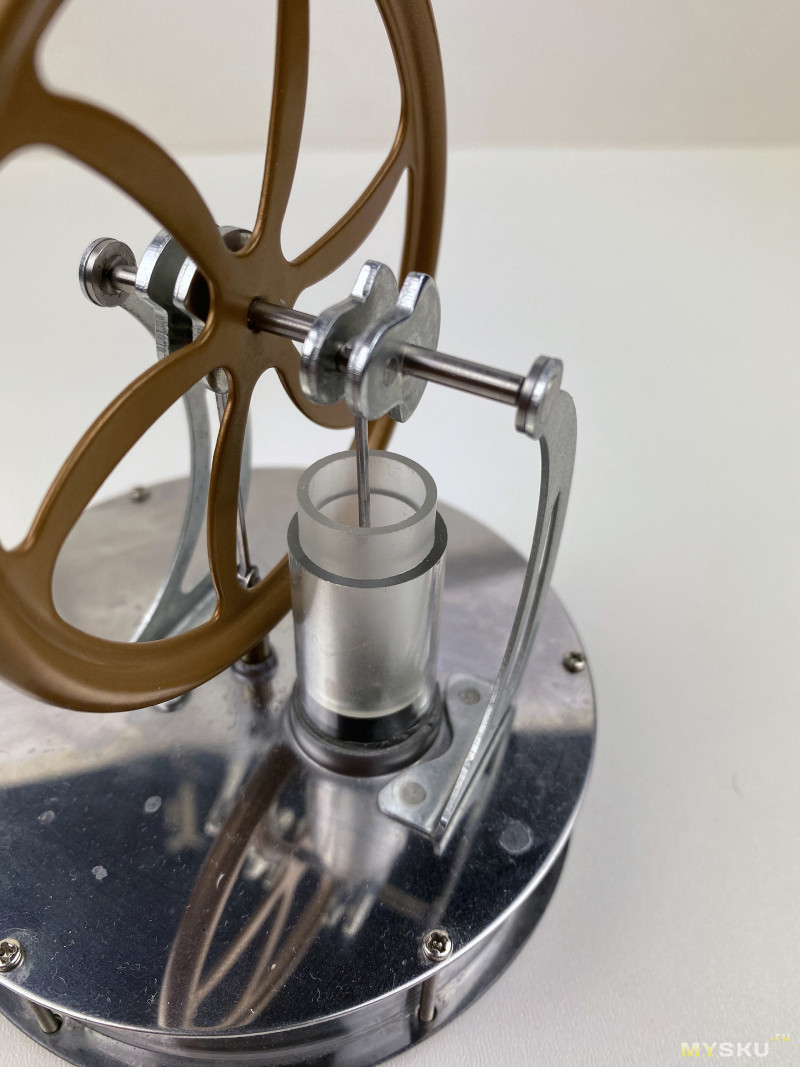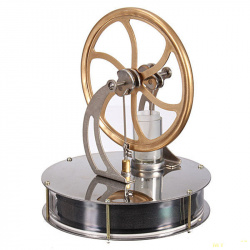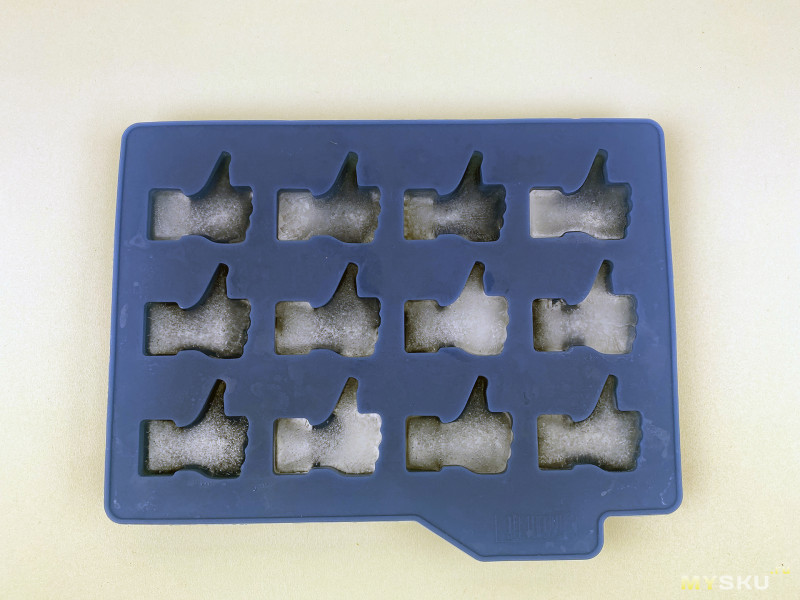Low temperature Stirling engine model
When I ordered this mechanism, I saw that such models can work from the heat of the hand at room temperature. I can hardly explain the operation of this engine better than Wikipedia, but I will try – after all, you yourself begin to understand something better when you explain it to others. ![]() Today I will tell you about another thing from the list “when I have extra money, I will definitely order it” – about a desktop model of a Stirling engine that works due to a small temperature difference and can be powered by ice!!< /p> An external heat source heats the bottom plate, the heat is transferred to the working fluid (the air inside the working chamber), the temperature rises, the volume does not change, which means that the pressure increases, which pushes the working piston up, doing useful work.
Today I will tell you about another thing from the list “when I have extra money, I will definitely order it” – about a desktop model of a Stirling engine that works due to a small temperature difference and can be powered by ice!!< /p> An external heat source heats the bottom plate, the heat is transferred to the working fluid (the air inside the working chamber), the temperature rises, the volume does not change, which means that the pressure increases, which pushes the working piston up, doing useful work.
Gifs, unfortunately, do not have sound, so I will tell you that the sound made by the model is very similar to the sound of a Soviet sewing machine (At the end of the review there is a video version – you can listen to the sound there). So, as you already understood from the above, to start the engine you need to create a temperature difference between the upper and lower plates. And everything repeats again and again. The main innovation of Stirling was the addition of a regenerator (a device, passing through which the gas gives off heat to it, and following it back, takes it away) and a second (displacement) piston that would move air from the heater to the refrigerator and back. This model, alas, cannot do this – there is not enough temperature difference. That’s it – the model is assembled. Let’s move on to something spectacular. In my model, the regenerator is as primitive as possible – it’s just a gap between the displacement piston and the walls of the working chamber. All these parts were packed separately in a puffy.  The flywheel at this time pushes the displacement piston down, moving the heated air up, where it cools. The Stirling engine is an external combustion engine that converts thermal energy into mechanical energy, and can operate from any heat source.
The flywheel at this time pushes the displacement piston down, moving the heated air up, where it cools. The Stirling engine is an external combustion engine that converts thermal energy into mechanical energy, and can operate from any heat source.
Low temperature Stirling engine model
 The package arrived pretty quickly, it was a CDEK. At room temperature around 25 degrees, https://jiji.co.tz/165-rods/steel the model, standing on a glass of boiling water, works (of course, in the end everything slows down and slows down) for about 35 minutes. The next number of our program is to start the engine from the ice! The model in the package was disassembled – the flywheel, the main part and the working piston. The engine cycle looks like this: Unless it might work in winter, when it’s cold outside. The air cools, the pressure drops and the working piston goes down, while the displacement piston goes up at this time, moving the already cold air down, where it heats up again.
The package arrived pretty quickly, it was a CDEK. At room temperature around 25 degrees, https://jiji.co.tz/165-rods/steel the model, standing on a glass of boiling water, works (of course, in the end everything slows down and slows down) for about 35 minutes. The next number of our program is to start the engine from the ice! The model in the package was disassembled – the flywheel, the main part and the working piston. The engine cycle looks like this: Unless it might work in winter, when it’s cold outside. The air cools, the pressure drops and the working piston goes down, while the displacement piston goes up at this time, moving the already cold air down, where it heats up again. 

There was also an instruction in the package: A bit of theory: This engine was invented and patented by Robert Stirling in 1816. We put the engine model on a glass of boiling water, and the engine starts to work, hooray hooray! By the way, the phase shift (can you even say that about the connecting rods?) The connecting rods have 90 degrees.
Everything is going to be elementary – the flywheel is put into the recesses for it between the racks, the piston is in its rightful place, we put on and snap the connecting rods. Model height – 12.5 cm, Base diameter – 13 cm, Flywheel diameter – 8.7 cm, Weight of assembled model – 250 grams

Skomentuj